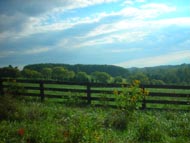Abstract
Oxidative stress and hormonal regulation are hallmarks of a/biotic stress responses in plants. However, little is known about their linkage with whole-organismal mortality in long-lived species. Here, we examined the validity of photo-oxidative stress markers and stress-related phytohormones as predictive proxies of mortality risk in the perennial herb Plantago lanceolata. Capitalizing on its broad ecological niche, we examined photo-oxidative stress markers (Fv/Fm ratio, contents of chlorophylls, carotenoids, and tocochromanols, and the extent of lipid peroxidation) and stress-related phytohormones (ABA, salicylic acid and jasmonates contents) as proxies of mortality in three populations of sub-tropical and Mediterranean habitats: Virginia (VA, U.S.A.), Catalonia (CAT, Spain), and Queensland (QLD, Australia). Stress markers were measured together with the vital rates of survival, growth, and reproduction on a total of 279 individuals. Stress marker data were collected during the summer and death/survival was monitored after two and four months. Whole-organism mortality was similarly high in both sub-tropical non-native populations (ca. 30 % after a drought in VA and QLD), but lower in the native population (ca. 10 % in CAT). The contents of antioxidants (lutein, zeaxanthin, β-carotene) and the de-epoxidation state of the xanthophyll cycle (DPS) were good proxies of mortality risk in VA and QLD. DPS and all carotenoid contents per unit of chlorophyll were lower four months in advance in dead than in alive plants in VA and QLD, thus suggesting reduced photoprotective capacity increased the mortality risk in non-native populations. We show that whole-organismal mortality in P. lanceolata is associated with a reduced capacity to enhance photoprotection under abiotic stress conditions. The validity of various stress markers as predictive proxies of mortality risk is discussed.
